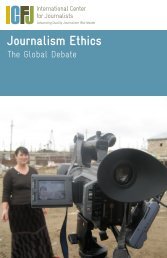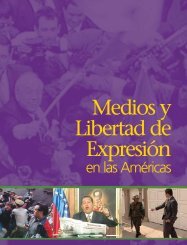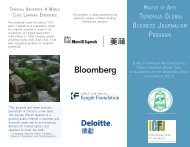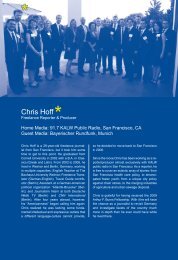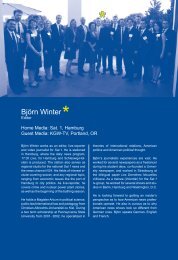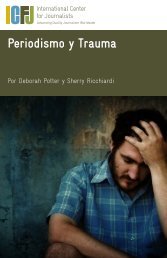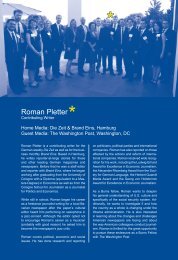Disaster and Crisis Coverage - International News Safety Institute
Disaster and Crisis Coverage - International News Safety Institute
Disaster and Crisis Coverage - International News Safety Institute
You also want an ePaper? Increase the reach of your titles
YUMPU automatically turns print PDFs into web optimized ePapers that Google loves.
According to the American Psychiatric Association, to be diagnosed with PTSD<br />
the person must have been exposed to a traumatic event in which both of the<br />
following were present:<br />
✦ The person experienced, witnessed, or was confronted with an event or<br />
events that involved actual or threatened death or serious injury, or a<br />
threat to the physical integrity of self or others.<br />
✦ The person’s response to the trauma involved intense fear,<br />
helplessness, or horror.<br />
The Dart Center’s Frank Ochberg tells patients suffering from PTSD that there is<br />
nothing abnormal about it. “It is a normal reaction to abnormal events. Anyone<br />
could have PTSD, given enough trauma,” the psychiatrist says.<br />
Case study: Truth in the crossfire<br />
An anonymous caller lured Jineth Bedoya Lima to a notorious prison near<br />
Bogotá, Colombia, by telling her that a paramilitary leader serving a sentence<br />
there wanted to talk. At the time, she was covering the conflict between the<br />
Colombian government <strong>and</strong> paramilitary groups for the newspaper El<br />
Espectador.<br />
As she waited for clearance to enter the prison, Bedoya was kidnapped at<br />
gunpoint. That night a taxi driver spotted a woman, bloodied with h<strong>and</strong>s tied,<br />
crawling out of a garbage dump. The reporter had been brutally beaten <strong>and</strong> gang<br />
raped. At one point, her captors ordered her to “pay attention. We are sending a<br />
message to the press of Colombia.” The date was May 25, 2000.<br />
Fifteen days after the incident, Bedoya was back on the job under the protection<br />
of a bodyguard. In 2001, she won a courage award from the <strong>International</strong><br />
Women’s Media Foundation. “I fell in love with my career <strong>and</strong> it has given me my<br />
greatest satisfaction, but also my greatest sadness,” she said during the awards<br />
ceremony in the United States. Bedoya later went to work for Bogotá newspaper<br />
El Tiempo.<br />
During an interview for a story in American Journalism Review on the dangers<br />
media faced in Colombia, she described being haunted by the horror she<br />
experienced. “There are days when I wonder why they didn’t kill me. There are<br />
days I don’t want to be alive because the sadness <strong>and</strong> the memories get me<br />
down,” Bedoya said in 2002.<br />
She credits her colleagues for providing emotional support during the darkest<br />
times. Outreach also came from abroad.<br />
<strong>International</strong> Center for Journalists<br />
44



